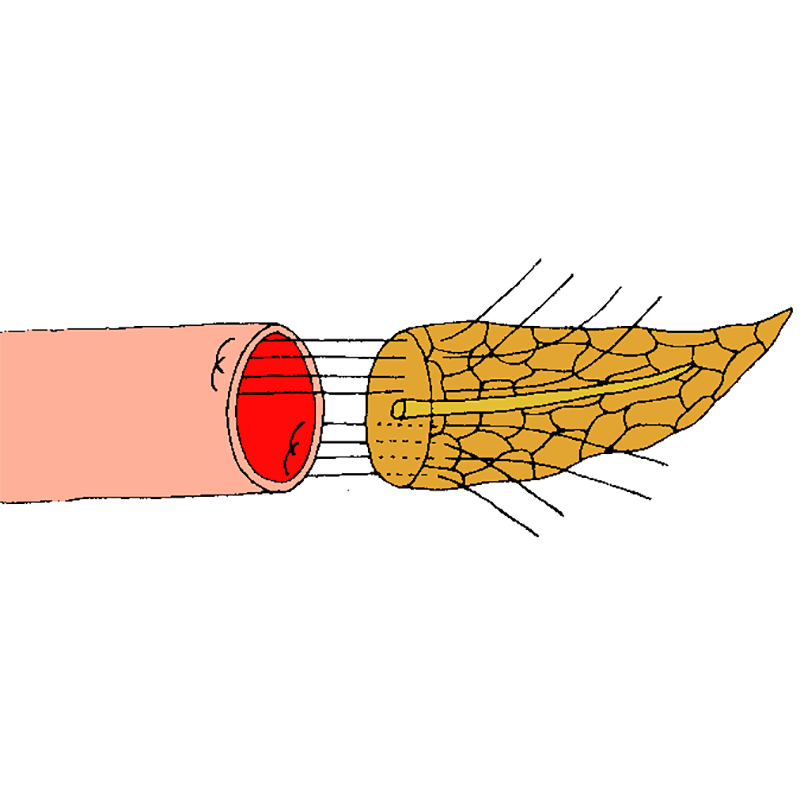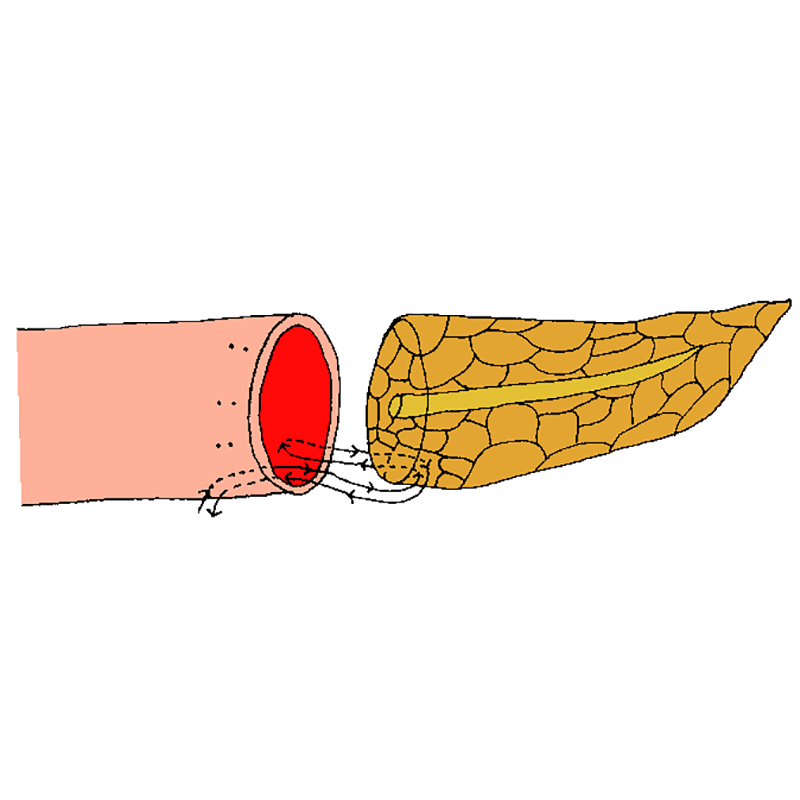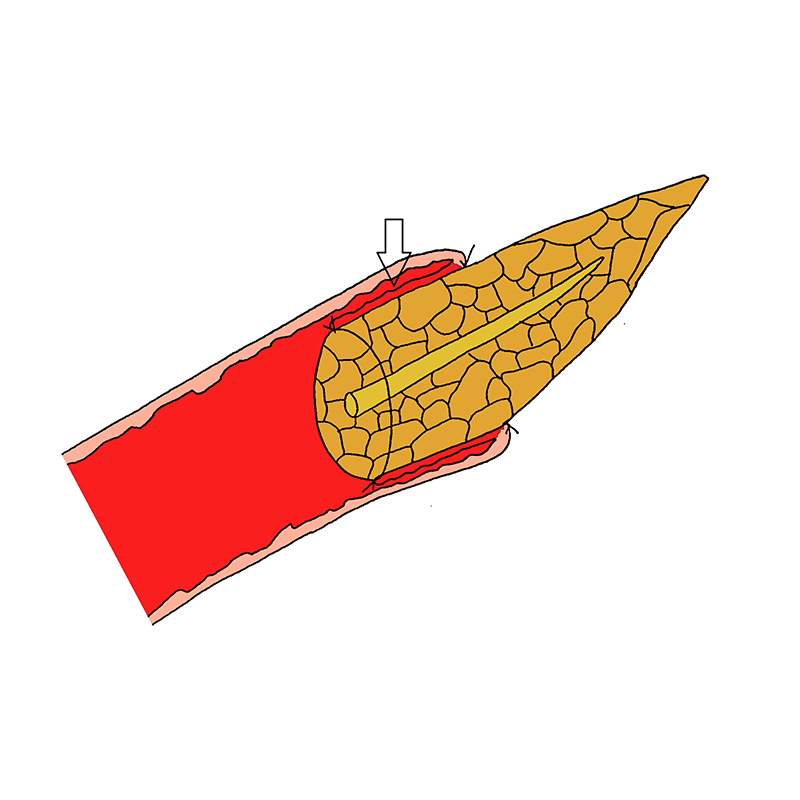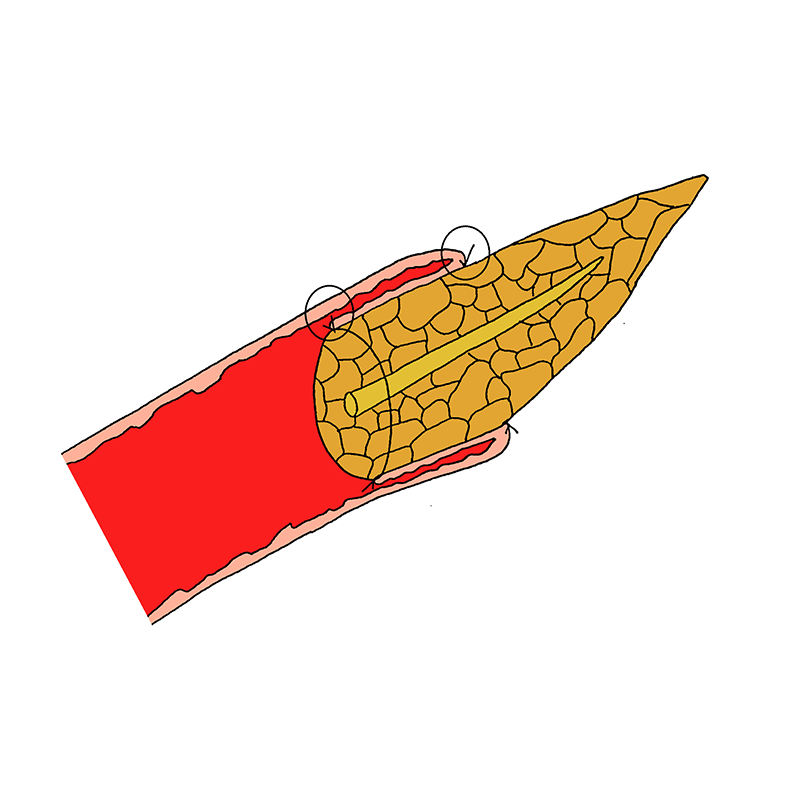Transpancreatic invagination suturing technique
Before transection of the pancreas, two hemostatic sutures are placed cranially and caudally within the pancreatic parenchyma. After resection of the specimen, the anastomosis is started, using a double armed suture. For the first invagination stitch, the needle passed through the entire pancreatic remnant from anterior to posterior, 1 cm away from the cutting edge, cranially from the main pancreatic duct.
Transpancreatic invagination suturing technique
- Before transection of the pancreas, two hemostatic sutures are placed cranially and caudally within the pancreatic parenchyma.
- After resection of the specimen, the anastomosis is started, using a double armed suture. For the first invagination stitch, the needle passed through the entire pancreatic remnant from anterior to posterior, 1 cm away from the cutting edge, cranially from the main pancreatic duct. The needle is then placed through the posterior seromuscular layer of the jejunum, 1.5 cm away from the stapled end. Next, the needle is passed again through the entire pancreas – from posterior to anterior – a few millimeters next to the first stitch.
- A second invagination stitch is placed in a similar fashion, caudally from the main […]






